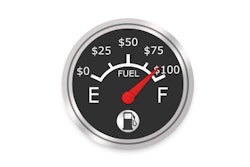
During his State of the Union address, President Obama committed his administration to further strengthen fuel efficiency standards for heavy trucks. The Environmental Defense Fund (EDF) welcomes this opportunity, and food manufacturers should, too.
Creating a more sustainable future is a long-term challenge. To rise to this challenge, food manufacturers must embrace solutions that tackle the root causes of environmental degradation and enable your customers, your companies, and your supply chain partners to thrive. Sustainability is not a zero-sum game.
As I have written before in this space [“Why Green Makes Good Business Sense,” September 2012], companies have a lot of opportunities to create business value by embracing sustainability efforts. Ocean Spray Cranberries, for example, was able to cut its outbound transportation costs and greenhouse gas emissions by nearly 20 percent by redesigning its logistics network. Other companies have found cost- and emission-savings through increasing truckload factors and switching to intermodal transportation. These laudable efforts are necessary in moving towards a more sustainable future. They alone, however, are not sufficient.
We need to do more than simply slow the growth in emissions; we need to bring them down. To this end, the single most important thing we can do is to build better trucks.
No one company or group of companies can impact truck fuel consumption on its own. In order for more efficient trucks to reach scale, entire industries most move together. Strong efficiency standards enable this movement by creating rules that reward innovation and quality.
Truck and equipment manufacturers already have technology available to make new freight trucks significantly more efficient than existing ones. In fact, recent analysis by the American Council for an Energy-Efficient Economy (ACEEE) found it’s realistic for new truck standards to be set high enough to achieve something approaching a 40 percent fuel consumption reduction compared to 2010 trucks within the next decade.
Examples of fuel saving solutions available to us include:
• Eaton, a manufacturer of truck transmissions has launched a powertrain package that can improve fuel efficiency by up to six percent.
• Cummins, Inc. and Peterbilt Motors Co. partnered last year to build a truck that averaged 9.9 miles a gallon in road tests. They did this through a suite of improvements, including capturing otherwise wasted thermal energy.
• Smart Truck Systems has a product that can cut fuel consumption from tractor-trailer combination trucks by more than 10 percent, through advanced aerodynamics.
Despite a proven track record in pilots and on test tracks, it’s proving hard for manufacturers to bring these many fuel-saving solutions to scale on their own. This is because the incentives, as applied individually to the key players in moving freight, are not sufficiently compelling. Strong, industry-wide efficiency standards can make the benefits of incentives far more self-evident, and make everyone better off.
Part of the issue around adoption is the question of who pays. Freight carriers make truck purchasing decisions, and they must balance upfront and operating costs. But, much of the actual fuel expense of operating these trucks is passed on to shippers in terms of fuel surcharges. Despite the fact that fuel consumption represents the largest single cost of owning and operating a truck—accounting for 37 percent of lifecycle costs, carriers are more likely to focus on the upfront equipment cost—which is 10 percent of the lifecycle costs. This means that carriers—operating in their own self-interest—will tend to leave many economically viable fuel-efficiency solutions on the table.
Shippers, on the other hand, often cover both the capital cost of purchasing a truck and the cost of the fuel needed to power it, meaning they stand to benefit significantly from strong efficiency standards. They spread this cost, though, across hundreds or thousands of trucks—and so lack the incentive to pay for improvements to any one truck.
All in all, stronger fuel-efficiency standards for tractor-trailers will drive the per-mile-cost of owning and operating trucks down. Carriers will be rewarded for investing in new equipment and will benefit from a competitive advantage against other operators that lack the same commitment. As I said, shippers are set to gain the most, and food manufacturers in particular are well set-up to benefit.
Food manufacturers are in a unique position to benefit from carrier investments that improve trailer aerodynamics. Hirschbach—an Illinois-based refrigerated carrier—is an example of a leading carrier that is already embracing these innovative solutions. It has retrofitted 60 percent of its trailer fleet with advanced Smart Truck Systems’ Aerodynamics packages. This investment helps its bottom line and that of its shipper partners. The relatively low ratio of refrigerated trailers to tractors further enhances the economic case for these solutions.
To understand the financial benefit of truck efficiency standards, past is prologue. Starting Jan. 1 this year, the nation’s first-ever heavy-truck efficiency standard went into place. These standards increased the efficiency of heavy trucks by up to 23 percent. In doing this, the price of some new trucks will increase over $6,000. However, the per-mile-cost of these new trucks will decrease by around eleven cents a mile.
In this next round of standards, shippers—not least shippers in the food industry—are in a strong position, as customers, to call for bold standards that will ensure their goods are hauled on ever-more fuel-efficient trucks. For the sake of the environment and the bottom line, they should do so.
We will all be better off with strong fuel efficiency rules.



















